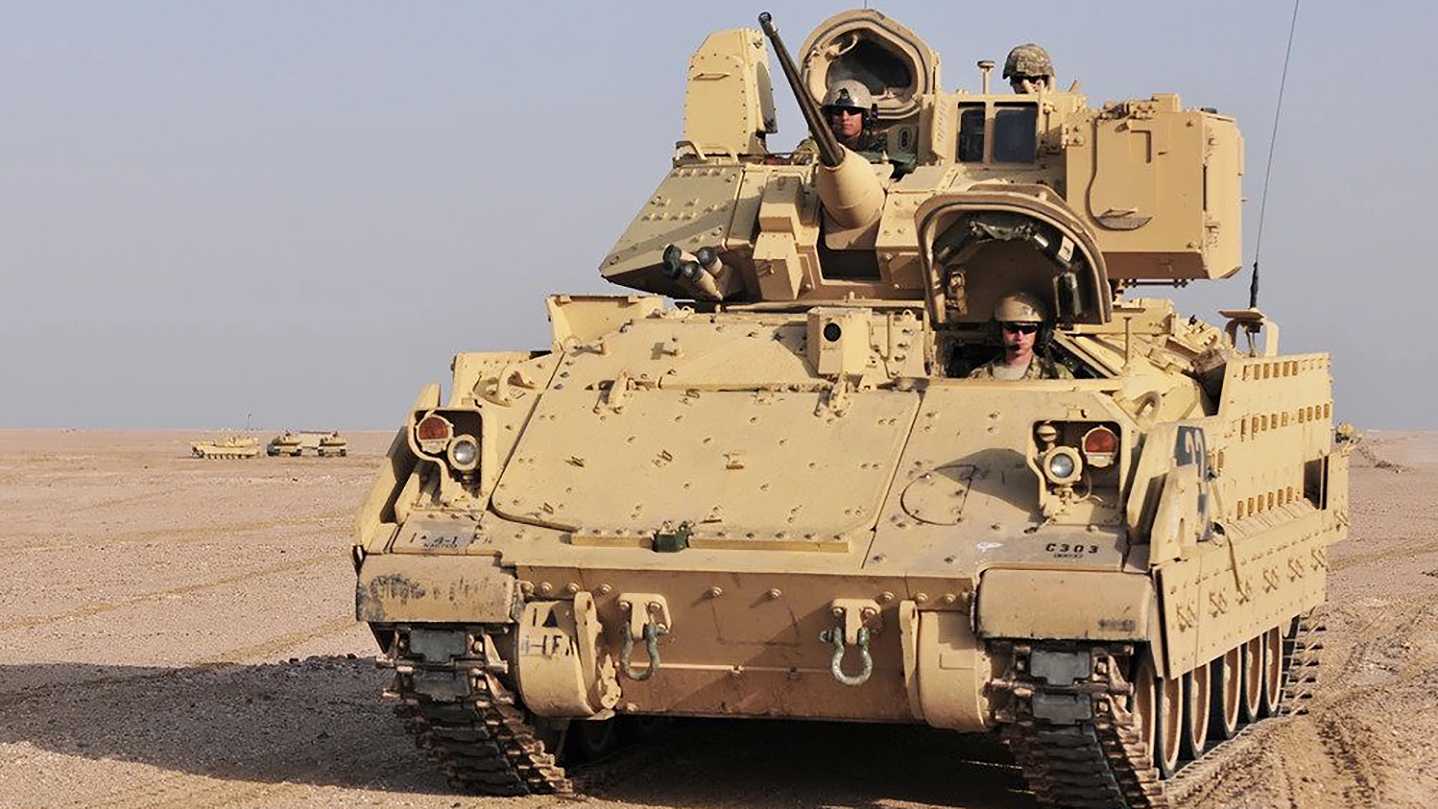The latest tranche of U.S. military aid to Ukraine includes four Bradley Fire Support Team (BFIST) variants, which have a laser range finder/designator, computers, and communications systems designed to coordinate fire from multiple platforms onto multiple targets. As such, they could be a major force multiplier on a battlefield that is dominated by artillery.
“Depending on their levels of fires integration, it’s a pretty good sensor-to-shooter link platform,” a veteran Bradley master gunner who spoke on condition of anonymity to discuss the vehicle’s attributes told The War Zone Monday morning. ”With a laser designator in place of a TOW [missile package], and the room to carry requisite computers and radio equipment, it is a one-stop shop for fires.”

The idea behind the Bradley BFIST is to have a command vehicle that can find targets and communicate their location to an assortment of friendly platforms, ranging from tanks and armored vehicles to artillery and multiple launch rocket systems (MLRS).
That will come in particularly handy when it comes to coordinating fires from a wide array of such systems, like M31 guided rocket-slinging M142 High Mobility Artillery Rocket Systems (HIMARS) and M270 MLRS provided to Ukraine by the U.S. and allies, as well as munitions like the 6,000 M982 Excalibur guided 155mm howitzer rounds provided to Ukraine and the undisclosed amount of Ground Launched Small Diameter Bombs (GLSDB) promised by the U.S. But beyond smart weaponry, just rapidly coordinating traditional artillery from a forward position will be a huge advantage.
“You’ve got a reclining chair in front of the fires computer, with multiple radios within arms reach,” said the Bradley expert. “That leaves the two guys in the turret to look for targets and work the designator pod.”

You can read more about what the Bradley Infantry Fighting Vehicles can bring to the fight in Ukraine in our deep dive here.
But exactly how the BFIST will be applied specifically to Ukraine’s unique battlefield terrain is unknown.
“I’m used to parking one on top of a mountain and calling for fire on everything in rapid succession; but can’t do that in flat farmland,” the expert said.
The four BFIST variants announced in the latest aid package are in addition to the 109 Bradley M2A2-ODS variants already promised to Ukraine, many of which have already arrived in Europe, where Ukrainian troops are training on them before they are turned over to Kyiv.
The latest aid package was announced on the day President Joe Biden visited Kyiv and promised Ukrainian President Volodymyr Zelensky additional military support.
“Today, in Kyiv, I am meeting with President Zelensky and his team for an extended discussion on our support for Ukraine,” Biden said. “I will announce another delivery of critical equipment, including artillery ammunition, anti-armor systems, and air surveillance radars to help protect the Ukrainian people from aerial bombardments.”

In addition to the Bradleys, this $450 million aid package – the 32nd Presidential Drawdown Authority ordered by Biden – includes more ammunition, anti-armor systems, surveillance radars and other equipment.
- Additional ammunition for High Mobility Artillery Rocket Systems (HIMARS);
- Additional 155mm artillery rounds;
- Additional 120mm mortar rounds;
- Four air surveillance radars;
- 500 Javelin anti-armor systems;
- Approximately 2,000 anti-armor rockets;
- Two tactical vehicles to recover equipment;
- Claymore anti-personnel munitions (configured to be compliant with the Ottawa Convention);
- Demolition munitions;
- Night vision devices;
- Tactical secure communications systems;
- Medical supplies;
- Spare parts and other field equipment.
In addition, there is also $10 million for the transportation of equipment in support of maintaining Ukraine’s energy infrastructure.
While not a huge number of vehicles, the four Bradley FST variants could act as significant force multipliers, improving Ukraine’s ability to shoot, move and communicate. How this would play out in the looming new Ukrainian offensive – or even if they arrive in time for Ukrainian troops to be trained on before getting them into the fight – remains to be seen.
Contact the author: howard@thewarzone.com
